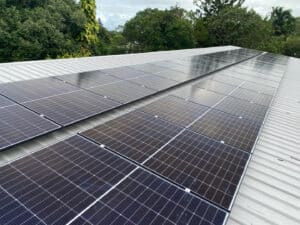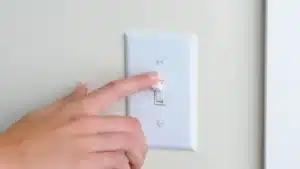National Battery Rebate
On April 6th 2025, Albanese Labor Government announced the Cheaper Home Batteries Program, a $2.3 billion initiative aimed at reducing the cost of household battery installations.
This program seeks to make battery storage systems more accessible to homeowners, small businesses, and community facilities, thereby enhancing energy independence and reducing electricity bills.
With a predicted 1 million home take up of this program, it will build a massive 10GW Virtual Power Plant which can be the equivalent of almost 6 Nuclear Power plants.
Every Battery installed reduces the cost of electricity for everyone as it reduces Peak Demand, reduces the need to upgrade substations and power lines which are the reason why energy bills keep climbing.
There will never be a better time to get a battery for your home!
Did you miss out on the 44 cent Feed in tariff? Don’t make the same mistake again now…
Here’s all the details:
Summary
● A re-elected Albanese Labor Government will make batteries cheaper for every Australian household and small business.
● This is not means tested!
● For our customers who are having batteries installed from 6/4/2025, don’t stress – the Labor Government said they will back date the rebate if the Battery is left turned off until July 1st. (Your solar system can remain on as normal).
● The Rebates will be from $3,500 up to $18,500 for both homes and businesses.
● The Government are expecting over one million new batteries by 2030, using the existing Small-Scale Renewable Energy Scheme that has successfully supported 4 million solar installations and has been efficient and effective for the solar industry.
● From January 1st every year the rebate will reduce approximately $1000 per year until 2029. (So you need to go now!)
● Batteries installed must be connected to a VPP ready Battery (Horan & Bird have the QLD Exclusive with the Powow VPP and to our knowledge, is the only one available in the North Queensland Ergon Region.
● Only one rebate is available per household. So, it makes sense to get a big one.
● If you already have a battery, you have not missed out as you can add another one.
Customers On The 44 Cent Feed In Tariff
Why be content with getting paid 44 cents a KWH when you can get $1 per kWh with a battery on the VPP?
If you connect a battery to your solar system, you will lose your 44-cent feed in tariff.
However, with only 2.5 years to go before it ends in 2028, you will be much better off claiming a $4000 battery rebate now, before it reduces significantly in 2028.
Here Are The Numbers:
When you use a Battery, you are saving 33 cents a kWh which is only 11 cents less that the 44 cent feed in tariff. So, if you are exporting 10KWh a day this is only (10 x 0.11 = $1.10) $401 difference. When you add the VPP Revenue with a battery this cancels this right out. Furthermore, when you consider the $4000 savings of a Battery Rebate it is honestly a no brainer!
What Will It Cost?
If you wish to get a battery with our Power Purchase Agreement (PPA) – you can have a battery installed with $0 Capital outlay and receive the rebate back to you in Cash up to $5500. (How good is that?!)
If You Want To Pay Outright For A Battery.
The estimated cost for a Home Battery connected your solar system will range between $5000 to $8000 depending on the size of battery used.
The payback on these batteries is now as good as solar!
Supercharge your savings when you connect the battery to a VPP.
Receive $1 kWh when your battery is called on to support the grid.
What Are The Savings?
A 10kWh battery will save you approximately $1200 per year.
When connected to a VPP you can also make up to $500 per year.
Based on a $1700 savings a year going battery is now only a 4-year payback!
Or 25 to 30% return on investment which is a lot better than the current stock market!
Along with getting back up power for your home.
Contact our team now and get a quote.

Founder of Horan & Bird. Director of Master Electricians Australia and Board Member of Solar Accreditation Australia. John has played a key entrepreneurial role in the transformation of the Energy Landscape in Queensland.





